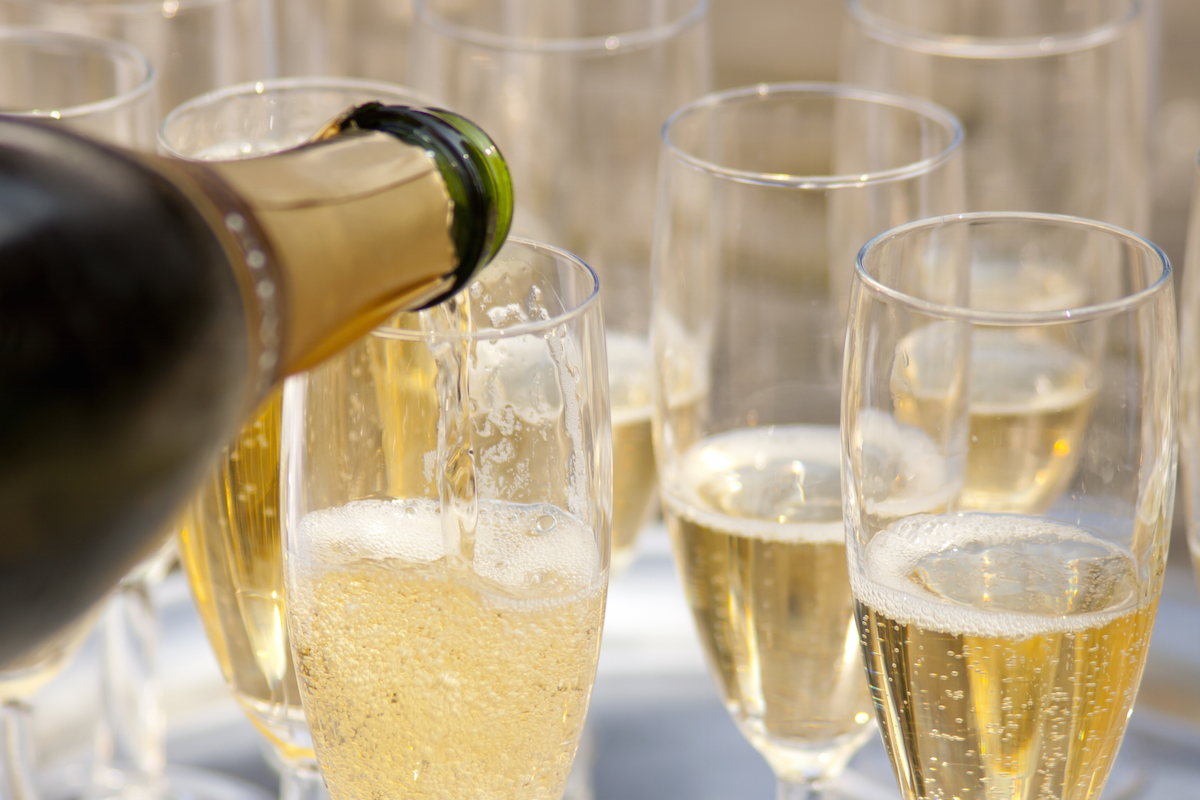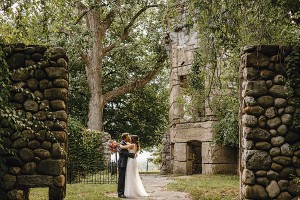Understanding the Differences Between Champagne and Sparkling Wine

Champagne being poured into glasses via Shutterstock
Champagne or sparkling wine: Do you know the difference?
If you’re struggling with which to have at your reception, don’t keep your frustration bottled up. Wes Narron, chief wine ambassador of City Wine Tours, helps pop the cork on the differences between bubblies.
What is the difference between sparkling wine and Champagne?
All Champagne is sparkling wine, but not all sparkling wine is Champagne. There are several types of sparkling wine. The most common: Champagne, prosecco, cava, and sparkling wine from the United States. Champagne can only be called Champagne if it comes from the Champagne region in northern France. A typical Champagne or U.S. sparkling wine is made from a blend of three grapes: chardonnay, pinot noir, and pinot meunier. If you see a Champagne or U.S. sparkling wine called “blanc de blancs,” it’s made exclusively from chardonnay. If you see a Champagne or U.S. sparkling wine called “blanc de noirs,” it’s made exclusively from pinot noir. Prosecco is the Italian sparkling wine. It’s made from the prosecco or glera grape. Cava is the Spanish sparkling wine. It’s usually made from a blend of macabeu, parellada, and xarello grapes.
Why are they priced so differently?
The price is determined by three factors:
- How much labor was involved in making the wine?
- How valuable is the land where the grapes grew?
- How many bottles did they make?
Champagne and most U.S. sparkling wines are made using the “methode champenoise,” a very strict set of guidelines developed in France. This method involves creating the effervescence (the bubbles) in the bottle, when it undergoes a secondary fermentation. This is a very complex process, which forces the winemaker to handle each individual bottle many times. Prosecco, and some other sparkling wines, get their bubbles by having the secondary fermentation occur in the giant tank of wine (called the Charmat method), then the sparkling wine gets put into a bottle. The cheapest sparkling wines have carbon dioxide pumped into the giant tank (like a soft drink), then get transferred into a bottle.
Are there are differences in taste?
The only way you can find the sparkling wine you like is to taste them all! You’ll find some of them taste bready, some citrusy, some fruity. Watch for the classification of sweetness. You’ll most commonly see sparkling wine labelled “brut” or “extra dry.” Brut should taste dry, with no perception of sweetness. Extra dry tastes slightly sweet. Yep, “extra dry” actually means less dry and it’s actually slightly sweeter than brut, with a much softer mouthfeel.
How should a couple choose a sparkling wine over Champagne for their wedding?
Drink what you like. Don’t get side-swiped by price or prestige. If you’re buying several cases of the stuff to give everyone a glass of bubbly for your toast, you’ll probably have a few bottles left over. Make sure you enjoy it! Learn whether you like dry or slightly sweet, bread or citrus, fine bubbles or more coarse bubbles. Dry, bread, fine bubbles usually equals a higher price, whereas slightly sweet, citrus, and coarse is less.
Do you have favorites?
Jaume Serra Cristalino Extra Dry Cava, a Spanish bubbly, around only $8 per bottle. Shh! No one has to know. It’s slightly sweet, with fresh pear and apple aromas, and rich citrus, peach, and green apple flavor.
Another favorite is Gruet Brut, a sparkling wine made in Albuquerque, New Mexico; it’s around $15 per bottle. It’s sophisticated green apple and grapefruit flavors, with a toasty finish.
For a more expensive treat, try Pierre Moncuit Blanc de Blancs Champagne, around $40 per bottle, for a tight and minerally wine, fresh and crisp, with lemon and tangy citrus flavors.
Moet and Chandon Nectar Imperial is my favorite Champagne, around $50 per bottle. It’s soft and sweet, with easy flavors of pear, vanilla, and almond. Nectar of the gods!
Any other thoughts we should mull over before choosing a bubbly?
Most sparkling wine (including Champagne) is non-vintage. In other words, the makers take juice from several different years and blend it together to make the bubbly. It allows them to keep a consistent flavor profile from year to year. If you see a vintage sparkling wine, it means the makers thought that year was a spectacular year and will represent their winery’s highest quality. How does that change the price? A non-vintage Champagne will typically cost $50. A vintage Champagne from the same winery will cost $100 to $150.
What stories do you want to see in Boston Weddings? Send us tips at weddings@bostonmagazine.com.
Getting married? Start and end your wedding planning journey with Boston Weddings' guide to the best wedding vendors in the city.


